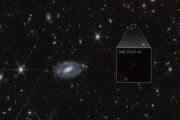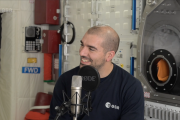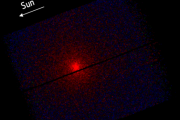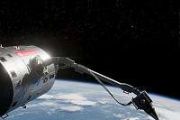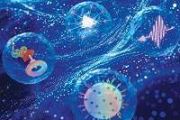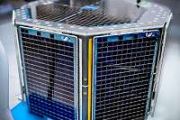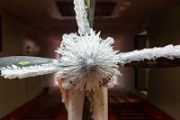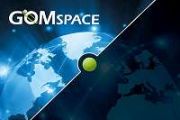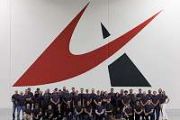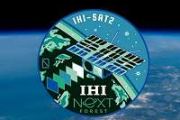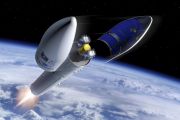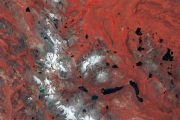
Copernical Team
NASA again delays Boeing Starliner's return home
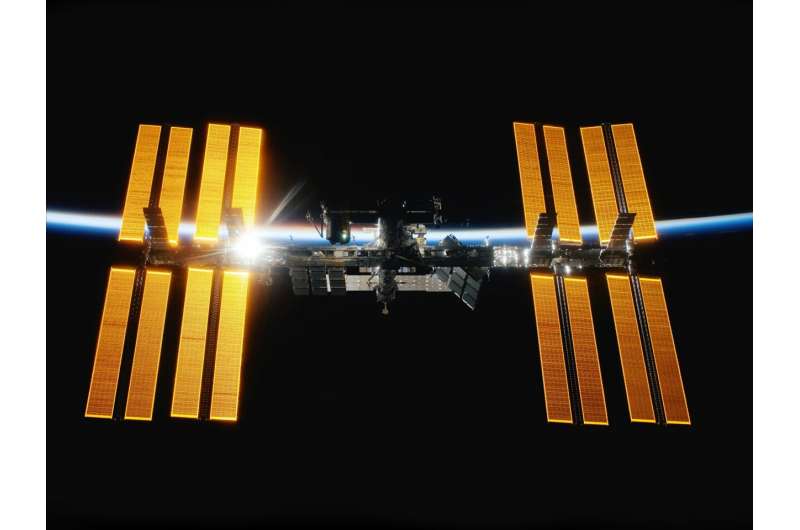
NASA said June 14 that the Boeing Starliner and its crew will now return to Earth from the International Space Station no earlier than Saturday, June 22.
"The extra time allows the team to finalize departure planning and operations while the spacecraft remains cleared for crew emergency return scenarios within the flight rules," NASA said on its Kennedy Space Center blog.
The Starliner's test mission launched on June 5 from KSC with astronauts Butch Whitmore and Suni Williams. During its journey to the ISS, helium leaks were found in the spacecraft's thruster system.
Earlier in the week, NASA said its teams were continuing to assess what impacts, if any, the five small helium leaks would have on Whitmore's and Williams' return to Earth. At that time, the space agency scheduled Starliner's return for Tuesday, June 18, "pending weather and spacecraft readiness."
NASA has said that engineers had determined the helium leaks shouldn't impact Starliner's return. The agency said the craft had enough helium for 70 hours of free flight time when only seven hours would be required as part of its journey home.
Fired SpaceX workers sue Elon Musk over workplace abuses
 Workers fired by SpaceX filed a lawsuit Wednesday accusing Elon Musk of fostering a sexist "Dark Ages" culture at the company he founded.
The civil complaint filed in a California court in Los Angeles contends Musk had the workers terminated after they published an open letter detailing their concerns and calling on the American aerospace firm's board to distance itself from the SpaceX chief
Workers fired by SpaceX filed a lawsuit Wednesday accusing Elon Musk of fostering a sexist "Dark Ages" culture at the company he founded.
The civil complaint filed in a California court in Los Angeles contends Musk had the workers terminated after they published an open letter detailing their concerns and calling on the American aerospace firm's board to distance itself from the SpaceX chief Just thinking about a location activates mental maps in the brain
 As you travel your usual route to work or the grocery store, your brain engages cognitive maps stored in your hippocampus and entorhinal cortex. These maps store information about paths you have taken and locations you have been to before, so you can navigate whenever you go there.
New research from MIT has found that such mental maps also are created and activated when you merely think ab
As you travel your usual route to work or the grocery store, your brain engages cognitive maps stored in your hippocampus and entorhinal cortex. These maps store information about paths you have taken and locations you have been to before, so you can navigate whenever you go there.
New research from MIT has found that such mental maps also are created and activated when you merely think ab Heat-Resistant Metal Alloys Under Study
 Stainless steel owes its popularity to the metal chromium, which reacts with oxygen to form a protective layer. Scientists and engineers now aim to design alloys that withstand extreme environments, such as those in nuclear fusion reactors and high-temperature jet engines. They are experimenting with multi-principal element alloys or medium- to high-entropy alloys. These alloys combine many meta
Stainless steel owes its popularity to the metal chromium, which reacts with oxygen to form a protective layer. Scientists and engineers now aim to design alloys that withstand extreme environments, such as those in nuclear fusion reactors and high-temperature jet engines. They are experimenting with multi-principal element alloys or medium- to high-entropy alloys. These alloys combine many meta Montana ballooning project confirms hypothesis about eclipse effects on atmosphere
 A Montana State University researcher has announced the first confirmed detection of eclipse-induced gravity waves in Earth's stratosphere in data collected by students participating in an MSU-led nationwide atmospheric science program.
Angela Des Jardins, director of the Montana Space Grant Consortium and an associate professor in the Department of Physics in MSU's College of Letters and
A Montana State University researcher has announced the first confirmed detection of eclipse-induced gravity waves in Earth's stratosphere in data collected by students participating in an MSU-led nationwide atmospheric science program.
Angela Des Jardins, director of the Montana Space Grant Consortium and an associate professor in the Department of Physics in MSU's College of Letters and Rocket Lab to Expand Semiconductor Production for Spacecraft with CHIPS Act Funding
 Rocket Lab USA, Inc. (Nasdaq: RKLB) has announced the signing of a non-binding preliminary memorandum of terms (PMT) with the Department of Commerce to receive up to $23.9M in funding under the CHIPS and Science Act. The investment aims to increase Rocket Lab's production of compound semiconductors for spacecraft and satellites by expanding and modernizing its facility in Albuquerque, New Mexico
Rocket Lab USA, Inc. (Nasdaq: RKLB) has announced the signing of a non-binding preliminary memorandum of terms (PMT) with the Department of Commerce to receive up to $23.9M in funding under the CHIPS and Science Act. The investment aims to increase Rocket Lab's production of compound semiconductors for spacecraft and satellites by expanding and modernizing its facility in Albuquerque, New Mexico New Database to Improve Astronaut Health Could Benefit Earthlings
 As space travel becomes more frequent, a new biomarker tool was developed by an international team of researchers to help improve the growing field of aerospace medicine and the health of astronauts.
Dr. Guy Trudel (Professor in the Faculty of Medicine), Odette Laneuville (Associate Professor, Faculty of Science, and Director of the Biomedical Sciences) and Dr. Martin Pelchat (Associate Pr
As space travel becomes more frequent, a new biomarker tool was developed by an international team of researchers to help improve the growing field of aerospace medicine and the health of astronauts.
Dr. Guy Trudel (Professor in the Faculty of Medicine), Odette Laneuville (Associate Professor, Faculty of Science, and Director of the Biomedical Sciences) and Dr. Martin Pelchat (Associate Pr EU puts digital Earth in orbit for climate-change fight
 A software model of Earth, meant to simulate and monitor environmental hazards while findings ways to mitigate climate change, began its monitoring and predictive mission on Monday, the EU Commission said.
The Destination Earth initiative resulted in a digital model of the planet to simulate natural phenomena by utilising an "unprecedented amount of data", according to its website.
The m
A software model of Earth, meant to simulate and monitor environmental hazards while findings ways to mitigate climate change, began its monitoring and predictive mission on Monday, the EU Commission said.
The Destination Earth initiative resulted in a digital model of the planet to simulate natural phenomena by utilising an "unprecedented amount of data", according to its website.
The m Origins of fast radio bursts examined using polarized light
 What scientists previously thought about where Fast Radio Bursts (FRBs) come from is just the tip of the iceberg, according to new research led by astronomers at the University of Toronto. The mysteries of the millisecond-long cosmic explosions are unfolding with a new way of analyzing data from the Canadian Hydrogen Intensity Mapping Experiment (CHIME).
Published today in The Astrophysica
What scientists previously thought about where Fast Radio Bursts (FRBs) come from is just the tip of the iceberg, according to new research led by astronomers at the University of Toronto. The mysteries of the millisecond-long cosmic explosions are unfolding with a new way of analyzing data from the Canadian Hydrogen Intensity Mapping Experiment (CHIME).
Published today in The Astrophysica Immune System Changes During Space Travel Could Affect Aging on Earth
 As long as humans have been traveling into space, astronauts have experienced significant health effects from the extreme conditions of space flight, notably the reduction of gravity.
Two Buck scientists led a team that has revealed for the first time how the lack of gravity affects the cells of the immune system at single cell resolution. As co-senior authors, along with Christopher E. Ma
As long as humans have been traveling into space, astronauts have experienced significant health effects from the extreme conditions of space flight, notably the reduction of gravity.
Two Buck scientists led a team that has revealed for the first time how the lack of gravity affects the cells of the immune system at single cell resolution. As co-senior authors, along with Christopher E. Ma 





